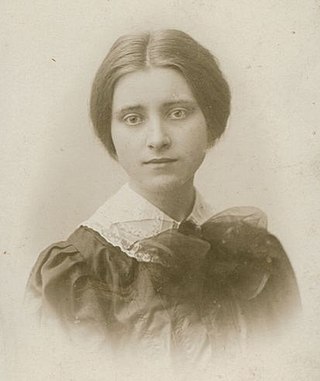
Kaunas is the second-largest city in Lithuania after Vilnius, the fourth largest city in the Baltic States and an important centre of Lithuanian economic, academic, and cultural life. Kaunas was the largest city and the centre of a county in the Duchy of Trakai of the Grand Duchy of Lithuania and Trakai Palatinate since 1413. In the Russian Empire, it was the capital of the Kaunas Governorate from 1843 to 1915.
ELTA is a Lithuanian news agency based in the Lithuanian capital Vilnius. In a day, it receives about 5,000 news articles and produces about 300 articles in Lithuanian, Russian, and English. ELTA cooperates with foreign news agencies such as Reuters, Associated Press, Deutsche Presse-Agentur, Polish Press Agency and others.

The Kaunas University of Technology is a public research university located in Kaunas, Lithuania. Established in 1922, KTU has been seen as one of Lithuania's top science education centers. In 2021, KTU was ranked the second-best university in Lithuania.

Antanas Žmuidzinavičius was a Lithuanian painter and art collector.

The M. K. Čiurlionis National Art Museum is a group of museums based in Kaunas, Lithuania. It is primarily dedicated to exhibiting and publicizing the works of the painter and musician M.K. Čiurlionis (1875–1911).
Robertas Antinis is a Lithuanian Sculptor, performance artist and poet. He is a winner of the National Culture and Art Prize.
Vytautas Janulionis was a Lithuanian glass artist. He was born in Klaipėda.

Petras Rimša was one of the first professional Lithuanian sculptors and medalists.

Vytenis Jankūnas is a Lithuanian-American artist living and working in New York City. His work consists of photographs, paintings and mixed media works.

War School of Kaunas was a military school for junior officers in Kaunas, the temporary capital of Lithuania. It was established in January 1919 during the Lithuanian Wars of Independence copying the example of Russian 4-month praporshchik schools established during World War I. Despite difficult circumstances and lack of some of the basic supplies, between March 1919 and October 1920, the school prepared three classes of 434 men who were sent to the front. 15 of these graduates were killed in action. The cadets also participated in suppressing several anti-government coups, including by the Polish Military Organisation in 1919 and by the Voldemarininkai in 1934. As a reliable and loyal force, they were used to guard the Constituent Assembly of Lithuania when it convened in 1920 or the former Prime Minister Augustinas Voldemaras during his trial.
Vytautas Landsbergis-Žemkalnis was a Lithuanian architect most active in interwar Lithuania (1926–1939). He was the father of Vytautas Landsbergis, the first Lithuanian head of state after independence from the Soviet Union.

Leonas Prapuolenis was a Lithuanian public figure, commander and leader of the June Uprising of 1941 in Lithuania.

Sofija Čiurlionienė née Kymantaitė was a Lithuanian writer, educator, and activist.
Ramybė Park is a public park in Kaunas, Lithuania, established in 1959 in the territory of the Kaunas City Old Cemetery that was also known as the Carmelite Cemetery. The cemetery was established in 1847 and became the main city cemetery with sections for four different religions – Roman Catholics, Eastern Orthodoxs, Lutherans, and Muslims. During World War I and subsequent Lithuanian Wars of Independence, Russian, German, and Lithuanian soldiers were buried in the cemetery. During the interwar period when Kaunas was the temporary capital of Lithuania, many famous people were buried there and several buildings were constructed on the cemetery's territory. In 1930, a monument to fallen Lithuanian soldiers with a tomb of an unknown soldier was unveiled. Around the same time, a tradition to honor fallen soldiers on the All Saints' Day began.

Vytautas Bulvičius was a Lithuanian military officer, major of the General Staff, and leader of the anti-Soviet Lithuanian Activist Front (LAF).

The Lithuanian Sanitary Aid Society was a Lithuanian society established in 1918 to provide medical care to refugees during World War I. First established in Minsk, the society purchased hospital equipment of a war hospital and relocated to Vilnius in July 1918. There it opened a hospital and continued to operate it until around 1941. Over the years, the hospital treated a total of about 300,000 patients. It was a charitable society, thus many of its treatments were provided at low cost or for free. After Vilnius incorporation into the Second Polish Republic, the society and the hospital were one of a few Lithuanian institutions active in Vilnius Region. The society and the hospital were headed by Danielius Alseika and, after his death, by Vytautas Legeika.
Rokiškis Music School was a music school sponsored by the Tyzenhaus family that operated in Rokiškis from 1873 to 1904. While it focused on preparing church organists, several prominent Lithuanian interwar musicians were its alumni.

Birutė is a two-act opera composed by Mikas Petrauskas based on the play by Gabrielius Landsbergis-Žemkalnis. It was first performed on 6 November 1906 in Vilnius and became the first Lithuanian national opera. The plot is based on the medieval legend about the love between Birutė and Grand Duke of Lithuania Kęstutis recorded in the Lithuanian Chronicles. The opera was written for the amateur Lithuanian performers and thus is mostly valued for its historical significance.
Vilnius Vytautas Magnus Gymnasium is a gymnasium in Vilnius, Lithuania. Established in 1915, it became the first Lithuanian-language high school in the city. During the interwar period, the school was one of the key Lithuanian institutions in Vilnius Region which was incorporated into the Second Polish Republic and claimed by Lithuania. Many prominent Lithuanians worked and studied at the school.

Vytautas Kašuba was a Lithuanian sculptor and honorary doctor of the Vilnius Academy of Arts. His major work is the Monument to Grand Duke Gediminas, a public sculpture in Vilnius in captal city of Lithuania, commissioned in 1992 and erected in October 1996.













